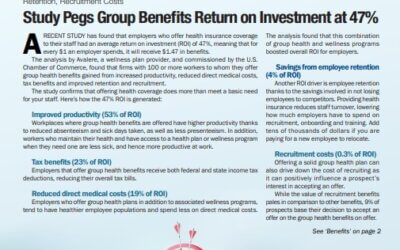American employers are trying to meet their workers’ mental health needs as they struggle with burnout and stress from their jobs and finances, according to a new report.
The annual “Aflac WorkForces Report” found that more than 50% of American workers experience burnout in their workplace. Additionally, 57% experience work-related stress, with heavy workloads the biggest stressor among young workers.
The survey results also showed found that employees are struggling with their mental well-being, and that employers can help by providing their staff with mental health tools and resources.
The poll also found that only half of workers (48%) had confidence that their employers cared about their well-being. This is a significant decline compared to 56% and 59% in 2022 and 2021, respectively.
In 2023, 89% of employees are experiencing mental health challenges like depression, anxiety and trouble sleeping, the survey revealed. The overwhelming majority of millennials (64%) and Gen-Z (67%) face high levels of burnout in the workplace.
In contrast, most employers (78%) believe their workers are satisfied.
The biggest stressor
Aflac noted that one of the biggest causes of stress and anxiety among workers is unexpected medical expenses. Moreover, while many employees have financial resources to cover medical emergencies, the state of financial wellness among the workers remains fragile.
According to the survey, 51% of American workers have savings to pay medical bills (a 6% increase compared to 2022). However, only 50% can afford out-of-pocket expenses that exceed $1,000. The survey also indicated that 48% of employees can’t survive without a paycheck for a month. Also, 30% of workers are in a worse financial position (compared to 2022).
What you can do
Not addressing burnout can reduce the quality of life for your staff and it could have downstream implications on your workforce — including diminished job satisfaction and work-life balance among those suffering from burnout, as well as a high chance they’ll be looking for new work.
To ensure employee satisfaction and retention, employers can provide mental health tools and resources. Here are a few tips that can help with employee satisfaction, retention and recruitment.
Improving work-life balance
Work-life balance perks — You can help workers maintain a balance between work and personal life. Dedicating an equal amount between the two eliminates burnout and stress. You can do this by offering:
- Flexible work schedules. A flexible work schedule gives employees a sense of autonomy. Instead of the traditional 9-5, you can give them the freedom to choose specific hours they wish to work or allow them to work four 10-hour days, leaving one day for personal stuff.
- More time off. One in three (33%) employees surveyed by Aflac ranked increased time off as their first choice for addressing burnout. More time off can be in the form of additional vacation time or “mental health” days.
- Paid sick leave. Workers who have paid sick leave can take those days off when they really need to stay home and don’t feel obligated to go to work when sick just because they need the money.
Other ways to help
Provide an EAP — Employee assistance programs include free and confidential assessments, short-term counseling, referrals, and follow-up services to employees who have personal and/or work-related problems.
EAPs address a range of issues affecting mental and emotional well-being, such as alcohol and other substance abuse, stress, grief, family problems and psychological disorders.
Offer creative bonuses — Offer cash bonuses for exceptional work efforts. If you can’t afford to pay your employees cash bonuses, you can consider something like morning or afternoon off, vacation vouchers, gym memberships and free lunches, to name a few.
Encourage regular breaks — Many workers fail to take their breaks because they get too wrapped up in work, or out of fear they will look bad in front of their colleagues.
Provide supplemental insurance — Supplemental benefits include accident, critical illness, hospital indemnity, disability, cancer, life, vision and dental insurance. These are designed to complement medical insurance, particularly for workers with high deductibles or out-of-pocket expenses. Premiums for many of these benefits are quite affordable.

